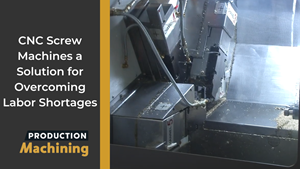Training the Next Generation: How Do We Make Training Work?
Creating cohesive training that is both relevant and significant is a challenge that everyone in the training and development world faces.
Creating cohesive training that is both relevant and significant is a challenge that everyone in the training and development world faces. Understanding a variety of factors, including the motivations of the trainees and their norms of behavior, can guide the types of training, their relevance, and ultimately, their success.
As a member of a training and development team, it is important to know where the company is going and why they are headed in that direction. Training must be aligned with the company’s vision, mission and purpose. It is always important to use our best judgement so that we are not slaves to the tyranny of the urgent; we need to maintain flexibility. In order to be a successful trainer, it is essential to be open to the community and realize companies are not their own little universe.
Relationships are an integral part, whether they are professional or formal. It takes consistent interaction and planning to help ensure staff and adult learners experience a successful professional development plan. It is important to remember that professional development is ongoing and needed to address the consistent change. The professional development team should know what motivates their staff and use those motivations to create meaningful activities in order to create and maintain a successful program. Most important, as trainers, as professionals and as exemplars of the corporate culture, it is our responsibility to model what we expect from our learners, whether it is in a formal or non-traditional setting.
It is essential to our success to motivate staff, and part of this means explaining how the training is directly relevant to them and to their professional and personal development. It is essential to enable staff by affirming them when the time is right and also to provide constructive criticism in order to help them grow and develop to their fullest potential. Part of understanding behavior is looking for ways to positively alter behavior. Our training efforts must encompass best practices and engage all participants to put their best foot forward. We must hold our people, and ourselves, to high standards. Providing constant encouragement during this type of training is essential.
What are the norms of behavior you see in your staff? In management? What does this say about the organization and the relationships within the organization? What shared experiences or activities does your organization use to keep all engaged? Continued learning keeps all of us educated and helps ensure a productive environment. For example, each year a company can choose two books or movies that the staff will discuss. These can serve as the theme for professional development meetings and classes.
By having a peaceful, open environment, teamwork and collaboration are nurtured for optimum development. By sharing thinking on a common subject, stronger bonds are formed, and the team gets experience with achieving consensus on the topics chosen. This will come in handy when they face more difficult challenges. The books and/or movies provide a focus to keep the group on task. By monitoring this activity, we can foster cooperation and teamwork among staff.
Relationships within the organization will greatly influence the professional development process. Relationships are everything. This is because everything is about relationships. It is important to find a way to connect and have some sort of relationship with every single staff member. When staff feels valued, they are more likely and more willing to put their best foot forward and collaborate with colleagues and management.
In the end, as trainers, we are responsible for more than only task knowledge and competency in our team. Building a culture of trust and easy communication is also one of our more important responsibilities. By modeling the behaviors that we expect from our learners, whether it be in a formal or non-traditional setting, we help to create that positive can-do culture that will sustain our companies in the years ahead.
Related Content
The Value of Aligning Efforts to Promote Manufacturing Careers
Successfully building the next generation of manufacturers requires a team effort between employers, educators and parents. Each of these three groups has a tremendous impact on young people’s career decisions. Without the support of all three, we are unlikely to bridge the skilled labor shortage that threatens the future growth of our industry.
Read MoreEmerging Leader's Dedication to Education
Instilling confidence throughout a shop floor can do wonders for company morale while increasing productivity.
Read MoreApplying a Healthy Approach to Employee Investment
Service Center Metals’ on-site health center offers its employees and their families free same-day health care and, in return, the employer is gaining many benefits including a healthier workforce and attracting potential employees.
Read MoreVideo Tech Brief: CNC Screw Machines a Solution for Overcoming Labor Shortages
CNC screw machines can exceed job shop productivity and enable manufacturers to overcome perpetual employment gaps.
Read MoreRead Next
Do You Have Single Points of Failure?
Plans need to be in place before a catastrophic event occurs.
Read MoreA Tooling Workshop Worth a Visit
Marubeni Citizen-Cincom’s tooling and accessory workshop offers a chance to learn more about ancillary devices that can boost machining efficiency and capability.
Read More5 Aspects of PMTS I Appreciate
The three-day edition of the 2025 Precision Machining Technology Show kicks off at the start of April. I’ll be there, and here are some reasons why.
Read More





















